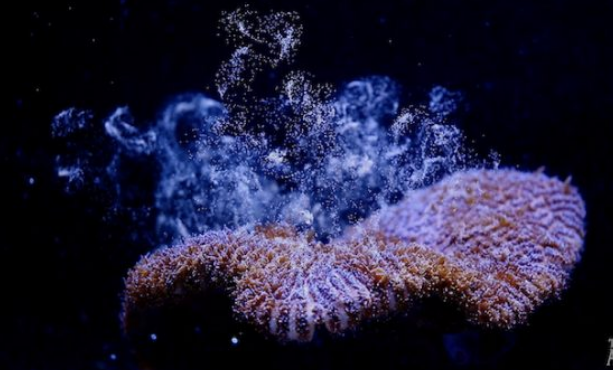For the first time ever, researchers at The Florida Aquarium are making scientific history by successfully reproducing a group of endangered Atlantic pillar coral in a lab setting.
Scientists believe the historic breakthrough, which enables sexual reproduction to occur entirely outside of the ocean, could ultimately help save corals in the Florida Reef Tract from extinction.
RELATED STORY:
Roger Germann, president and CEO of The Florida Aquarium, said in a statement:
When history is made, there is hope, and [this] scientific breakthrough … gives us real hope that we can save the Florida Reef Tract from extinction.
And, while many coral experts didn’t believe it could be done, we took that challenge to heart and dedicated our resources and expertise to achieve this monumental outcome. We remain fiercely committed to saving North America’s only barrier reef and will now work even harder to protect and restore our Blue Planet.1
Producing a spawn has never been accomplished for corals native to the Atlantic, so the system was set up to see if it could work. Germann said numerous coral experts questioned whether the aquarium’s efforts would produce successful results.
RELATED STORY:
The Florida Reef is the only living coral barrier reef in the continental United States, and is the third largest coral barrier reef system in the world, after Australia’s Great Barrier Reef and the Belize Barrier Reef.
A quarter of ALL ocean life thrives on these fragile habitats, but they are quickly being devastated by overfishing, sunscreen, pollution, and climate change.
RELATED STORY:
The Florida Aquarium has partnered with London’s Horniman Museum and Gardens to change that. They combined forces in late 2017 to save coral reefs by predictably inducing corals to spawn in the lab. This restoration technique has previously been accomplished only with Pacific coral species.
Scientists spent months mimicking the natural environment of Atlantic colonies of corals using advanced technology to reproduce the timing of sunrises, sunsets, moonrises, and moonsets to trigger procreation. Pretty incredible!
The Florida Aquarium will raise juvenile corals long enough to give them a better chance of survival. Keri O’Neil, senior researcher, said in a statement:
The massive and fully synchronized spawning at The Florida Aquarium’s Center for Conservation, which occurred exactly at the predicted wild spawning time, indicated perfect aquatic conditions for pillar corals in our Project Coral system.
When you have great husbandry, great water quality, and all of the right environmental cues, this is what you can do. You can change the game for coral restoration.1
RELATED STORY:
Moving ahead, the aquarium intends to raise its juvenile corals long enough to give them a better chance of survival than they would have if they’d been larvae in the ocean. The team will eventually use them to repopulate the Florida Reef Tract. They may even use robots for the task. According to Germann:
While many coral experts didn’t believe it could be done, we took that challenge to heart and dedicated our resources and expertise to achieve this monumental outcome.
We remain fiercely committed to saving North America’s only barrier reef and will now work even harder to protect and restore our Blue Planet.1
Besides the Atlantic pillar coral, the Florida Aquarium researchers are also working on numerous approaches to save many endangered species of coral that are crucial to the restoration and overall health of the local reef.
This heroic achievement, if combined with a conscientious effort to eliminate pollution from Mother Earth’s oceans, sounds very promising.
Source:
Please get on our update list today, as social media is strangling our reach. Join here: http://healthnutnews.com/join THANK YOU!












